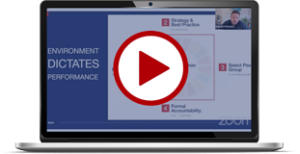If you’ve ever “choked” under pressure, you’re not alone.
It’s a common scenario. You’d spent days preparing for what could be the most important meeting of your career. You’d rehearsed what you’d say: repeating it over and over until you could deliver it in your sleep. Then the big day arrived… and suddenly your throat tightened up, and your mind went completely blank.
Or perhaps you were working in a high-stress environment with tight deadlines, toxic office politics, and constant unrealistic expectations. As time went by, you noticed you were making more and more mistakes, and regularly forgetting crucial details and deadlines.
Stories like these are all too common in the workplace – especially at this time of year with the Christmas holiday season bearing down on us.
There’s a biological reason most people don’t perform well under pressure.
To understand why pressure affects performance, it helps to know a little about the way your body reacts to stress. Describing your stress response fully would require a blog post (and possibly a book!) of its own. The key point for this article is that when you experience a stressful event, your body produces “fight-or-flight” hormones such as cortisol and adrenaline.
These stress hormones have measurable effects on certain parts of your brain. In particular, they interfere with the function (and, over time, the actual structure) of:
– Your hippocampus, which controls memory and learning
– Your pre-frontal cortex, which controls problem-solving and reasoning
Once you understand this effect, it’s easy to see why your mind goes blank and you start making mistakes when the pressure begins to build. And it also becomes clear that the key to performing well under pressure is to first interrupt this stress response; and then identify the best solution to the stressful situation.
A three-step guide to performing under pressure:
When you find yourself experiencing – or anticipating – a stressful situation, try this three-step process to keep it from hijacking your performance.
Step 1: Actively calm yourself
The stress hormones in your system literally keep you from thinking clearly when you’re under pressure. So your first step needs to include activities that calm this response, for example:
Relaxation techniques: deep breathing, meditation and positive visualisation can all contribute to reducing heart rate, blood pressure, cortisol levels, and other markers of stress.
Positive self-talk: your thoughts about the situation can either exacerbate or reduce your stress response to it. By choosing positive thoughts, you’re effectively choosing to weaken your body’s stress response.
Affect labelling: research shows that this technique, which involves consciously labelling your emotions, can significantly lower their intensity. To use it, take a metaphorical step back from whichever emotion you’re feeling, and simply name it. This creates enough distance for you to start to process it.
Step 2: Analyse the situation
Once you’re feeling calmer and clearer, it’s time to objectively look at the problem that’s creating the pressure. Ask yourself questions such as:
What are the objective, grass-roots facts about the situation?
What are the worst-case-scenario risks if it’s not solved?
How likely are those risks to happen?
Who could help you to solve it?
What possible courses of action would solve it?
Step 3: Identify the solution you’ll adopt and implement it
At this stage, you simply need to ascertain which of the courses of action that you identified in Step 2 will best solve the situation.
Note that while it may be tempting to wait until you’ve identified “the perfect solution”, it’s usually better to take imperfect action than to do nothing at all.
What do you think?
What causes you the most pressure and stress in your workplace? What techniques have you found effective in dealing with it? Share your thoughts in the comments below!
Mette’s new book How to Make Yourself Promotable offers more in-depth information on the calming techniques above; in addition to a step-by-step guide to affect labelling.












